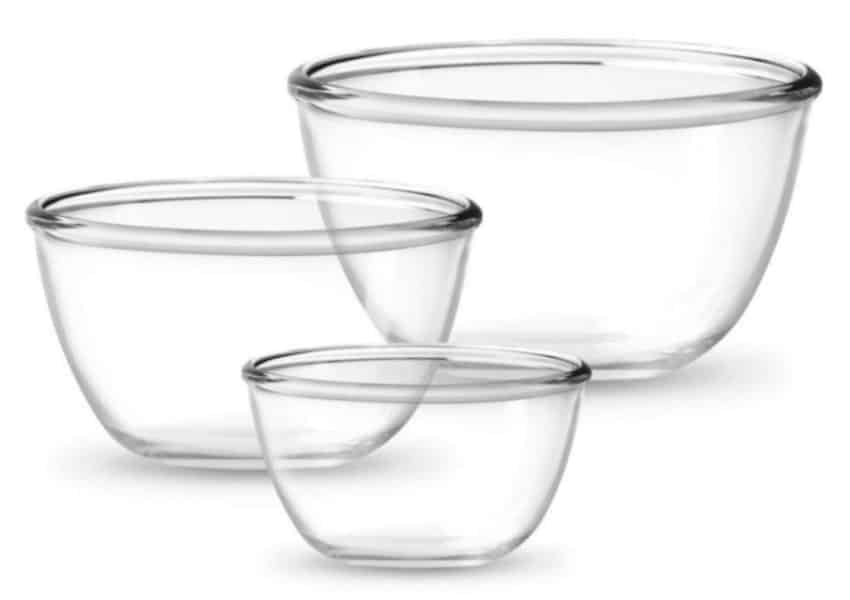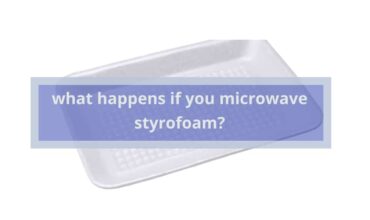The short answer is yes; you can microwave glass, prepare your food quickly and ensure minimizing your cooking times. Heating in the microwave is an irreplaceable option in our daily life. Because of the several and countless benefits of glass, like having clear packaging, being hundred percent recyclable, reusable and sustainable, and most importantly, safe for storing drinks and food, it has always been in our everyday use.
It is vital to identify the type of glass you can microwave and which you shouldn’t. By the end, you won’t fear putting glass inside the microwave oven or wonder about microwaving glass anymore.
Can you microwave glass?
Yes, you can microwave glass. Microwave usage is a vital thing nowadays, so before putting glass bowls, glass dishes, or whatever you put inside the microwave, you should identify the type of glass suitable for microwaving and check first if it is microwave-safe bowls or not. So, whatever glassware you use should hold a microwave-safe label.
Microwave manufacturers would print a little picture of a microwave with wavy lines on the microwave-safe glassware. However, this sign might not be present on all vintage glass.
Read also : What Is Microwave Grill Oven?
Is there a quick test to check if a glass bowl is microwave-safe or not?
Yes, there is a quick test to check if a glass bowl is microwave-safe or not.
- Set the microwave to its maximum power setting and turn it on.
- Hold a cup that is microwave-safe, and make it three-quarters full with water. Then, inside the microwave, you will need to place the cup of water.
- Don’t fill the glass container in question with water. If the glass you test is small, put the cup of water right beside it. Place this cup on the glass container. If the glass bowl is too big, ensure you don’t spill.
- Make the microwave set for only one minute by adjusting the settings. Then place the container with the water inside the microwave oven.
- Look for the temperature of the glass bowl if the defined minute has passed and if you find the glass container is still hot and the water remains cold, the tested container is unsafe to microwave in this situation.
For more information visit: Pyrex Safety and Usage Instructions
The second case is finding the container cold and the water hot; in this case, you can use the microwave without risk.
If the cup were set above the container, then the middle of it would be warm.
Knowing the condition of your glassware before putting a glass container inside your high-heat microwave is crucial for avoiding any potential problems. If unsure about your glass container’s performance, always run a short test using these guidelines.

Which types of glass are not microwaveable?
- Anything that does not have the designation “microwave-safe” or fails the microwave test previously mentioned because of the possibility that the glassware contains metal, colors, or air bubbles that might cause the glass to shatter or break in the microwave.
- Additionally, it would help if you didn’t microwave glass food containers or drinking glasses with plastic seals. Tiny air bubbles in the glass that is not microwave-safe might enlarge due to heating. The glass will break if these bubbles are big enough to do so.
- Also, it is recommended not to heat metal-trimmed glass in the microwave. The glass will be at risk to break if the metal ignites and sparks.
- Before placing any colored glass, whether a glass cup, a glass dish, or anything you would like to use and place daily in the microwave, check for the famous label that holds “microwave-safe” written on it. Always remember that The glass’s coloring may not be food-safe.
Read More: https://kitchenzad.com/what-is-microwave-vent-fan-for/
Can cold glass be microwaved?
It depends. Glass containers (like glass cups or glass dishes) that have been recently refrigerated and are just slightly chilly have the go-ahead, but if it has been in the freezer or the refrigerator for a while, let the glass warm up on the counter first.
Temperature fluctuations and extreme heat variations are known to be the worst and the ideal conditions for breaking the glass, not thawed, creating a real mess. Rapid temperature change is not good at all.
Glass Breaks in Microwaves: Why?
- Tiny air bubbles that expand when heated are frequently present in the microwave-unsafe glass. Imagine having a glass bowl exposed to a high heat level, and this heat would make the glass bowl stretch unevenly. Consequently, the air bubbles would get hotter, and sadly, the glass bowl would break. The glass will crack if the tension is significant enough.
- Another issue concerning the structural integrity of glassware is the decorations manufacturers’ design on the glassware.
- Some glass containers include metal trim, making them dangerous to microwave. The microwaving process includes raising the heating level, enabling the metal sparks to induce glass breakage.
- Manufacturers sometimes design glassware with silver or gold rims that are not microwavable because the metal may react with electromagnetic radiation.
- Even the glass holding the “microwave-safe” label but containing any cracks would undergo breakage. Your glassware may break as a result of uneven heating.
Consequently, inspect your glass container anytime you try to microwave it.
Read also: What is Microwave Vent Fan For?
How hot or cold must it be for glass to “break”?
Average room temperature, cold temperatures, and warm temperatures slightly affect glass bottles and jars. However, extreme temperature changes and intense heat (>300°F) put the glassware at risk to crack or even shatter.
Given that glass has a low thermal conductivity, sudden temperature shifts of at least 60 °F may cause stress cracks in the material.
The thin glass begins to shatter when heated and commonly breaks at about 302–392°F.
A glass container can gradually lose its shape and transform from a permanently solid state to a plastic state when put on a highly intense heat source (such as one that is 500°C or more).
Glass containers may tolerate microwave heat since they are composed of heat-resistant materials.
Glass containers should never be microwaved with lids in place, though.
When exposed to temperatures below freezing, the glass may crack. It might happen if the contents freeze and expand, shattering the glass as a result (if the cap does not come off).
Read More: https://kitchenzad.com/can-you-microwave-eggo-waffles/
Some Advice for Microwaving Glass
Microwave usage is not complicated; it just needs to follow simple instructions.
- While preparing your food in the microwave, you should often stir. Swirl the contents as you cook to ensure that your food is warmed evenly and spread heat equally.
- Avoid using glass to microwave frozen foods.
- Always depend on low heat levels and adjust the power level if you are about to microwave a cold glass containing food.
- Although microwave-safe glass won’t likely melt in your microwave, you shouldn’t put it there for more than five minutes to prevent it from breaking or cracking. So, the duration will also help you throughout the process, as less than five minutes is ok.
- An extra tip: always inspect anything tempted to heat up and look for the safety labels indicating it is microwave-safe. Looking for the microwave-safe label is an important step before heating in microwaves.
Read also: https://kitchenzad.com/is-microwave-popcorn-vegan/





